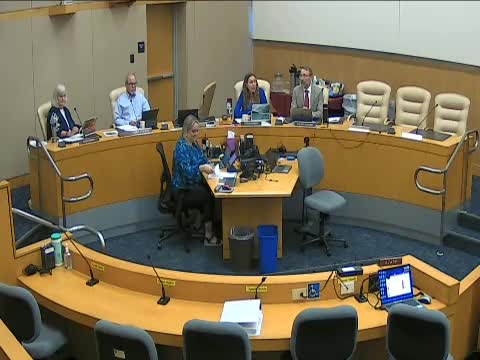Sonoma County launches ambitious climate resilience action plan
August 13, 2024 | Sonoma County, California
This article was created by AI summarizing key points discussed. AI makes mistakes, so for full details and context, please refer to the video of the full meeting. Please report any errors so we can fix them. Report an error »

During a recent government meeting, Sonoma County officials unveiled a comprehensive Climate Resilience Action Plan aimed at achieving carbon neutrality by 2030. Barbara Lee, the director of the Climate Action and Resiliency Division, presented the plan alongside her team, outlining its dual focus on county operations and community engagement.
The plan is structured around five specific climate action goals and includes a series of measures designed to reduce emissions and enhance resilience. Lee emphasized that the analysis indicates the goal of carbon neutrality is achievable, with a mix of immediate and long-term actions planned from 2024 to beyond 2030.
Key components of the plan include investments in climate resilience funds, vegetation management, and significant grants from federal agencies, totaling approximately $100 million to support community climate resilience. The plan also proposes a community engagement strategy to ensure that the voices of those most affected by climate change are heard, particularly in unincorporated areas.
Jada Navayan, the principal climate analyst, highlighted the importance of community involvement, stating that an advisory committee will be formed to guide engagement efforts. This committee will focus on culturally relevant materials and activities to address specific community needs.
The meeting also addressed the current carbon footprint of Sonoma County, revealing that unincorporated community emissions stand at approximately 827,200 metric tons of CO2 equivalent. The plan aims to balance emissions with effective mitigation and carbon sequestration strategies, particularly through nature-based solutions such as afforestation and improved land management.
Simone Albuquerque, a climate resilience analyst, discussed the state's voluntary targets for nature-based solutions, which will play a crucial role in achieving the county's climate goals. The plan includes a multi-criteria analysis to evaluate the effectiveness of various measures, with a focus on prioritizing nature-based solutions that offer the highest potential for carbon sequestration.
Overall, the Climate Resilience Action Plan represents a significant step towards a sustainable future for Sonoma County, emphasizing the need for collaborative efforts and community engagement to tackle the pressing challenges of climate change. The board did not make any decisions on funding recommendations during this meeting, but the groundwork has been laid for future actions.
The plan is structured around five specific climate action goals and includes a series of measures designed to reduce emissions and enhance resilience. Lee emphasized that the analysis indicates the goal of carbon neutrality is achievable, with a mix of immediate and long-term actions planned from 2024 to beyond 2030.
Key components of the plan include investments in climate resilience funds, vegetation management, and significant grants from federal agencies, totaling approximately $100 million to support community climate resilience. The plan also proposes a community engagement strategy to ensure that the voices of those most affected by climate change are heard, particularly in unincorporated areas.
Jada Navayan, the principal climate analyst, highlighted the importance of community involvement, stating that an advisory committee will be formed to guide engagement efforts. This committee will focus on culturally relevant materials and activities to address specific community needs.
The meeting also addressed the current carbon footprint of Sonoma County, revealing that unincorporated community emissions stand at approximately 827,200 metric tons of CO2 equivalent. The plan aims to balance emissions with effective mitigation and carbon sequestration strategies, particularly through nature-based solutions such as afforestation and improved land management.
Simone Albuquerque, a climate resilience analyst, discussed the state's voluntary targets for nature-based solutions, which will play a crucial role in achieving the county's climate goals. The plan includes a multi-criteria analysis to evaluate the effectiveness of various measures, with a focus on prioritizing nature-based solutions that offer the highest potential for carbon sequestration.
Overall, the Climate Resilience Action Plan represents a significant step towards a sustainable future for Sonoma County, emphasizing the need for collaborative efforts and community engagement to tackle the pressing challenges of climate change. The board did not make any decisions on funding recommendations during this meeting, but the groundwork has been laid for future actions.
View full meeting
This article is based on a recent meeting—watch the full video and explore the complete transcript for deeper insights into the discussion.
View full meeting
